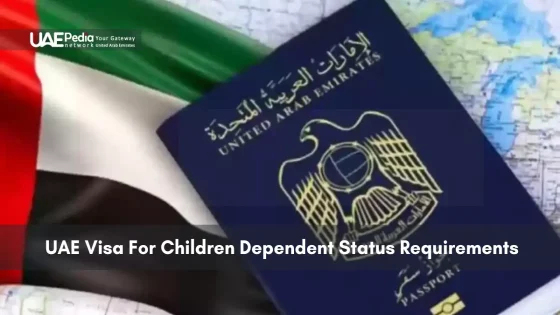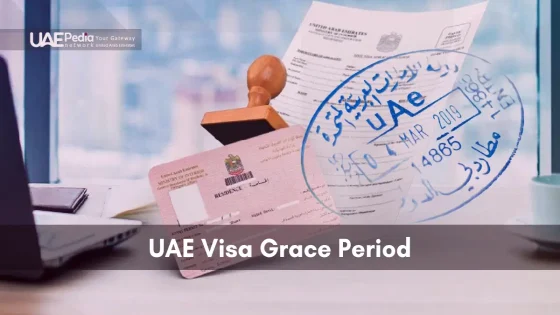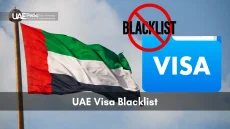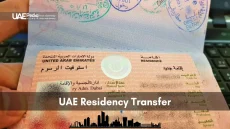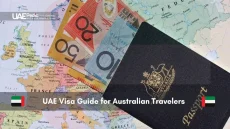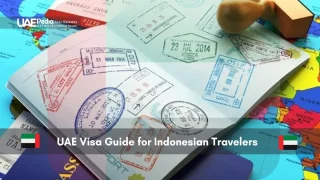What if securing your family’s future in the Emirates could be simpler than you think? Navigating residency rules for young ones doesn’t have to feel like crossing a desert without a map. Whether you’re a first-time applicant or renewing documents, this guide breaks down every step with the clarity you deserve.
Living abroad brings adventure—and paperwork. A child’s residence visa unlocks essentials like schooling and healthcare while ensuring their stay remains fully legal. But requirements shift depending on your status as a resident, employment details, and even your home country’s agreements with the UAE.
We’ll walk through eligibility checks, document prep (hello, passport copies and medical forms), and fee structures. You’ll learn why some applications sail through while others hit snags—and how to avoid common pitfalls. Let’s turn confusion into confidence.
- Core criteria for sponsorship based on income and housing
- Step-by-step breakdown of document authentication
- Updates on recent policy changes affecting dependents
Understanding the UAE Visa for Children Dependent Status Requirements
Ever wondered how some families breeze through moving abroad while others stumble? The secret’s in the details of their legal prep. Getting your little ones properly registered isn’t just red tape—it’s the golden ticket to school spots, pediatric checkups, and peace of mind. Let’s unpack why this application process matters more than you might think.
Why the Paperwork Pays Off
Think of a residence visa as your family’s backstage pass. Without it, simple things like enrolling in soccer practice or visiting a clinic become hurdles. The system here prioritizes stability—that’s why criteria like income thresholds and housing proofs exist. Meet them, and you’re not just checking boxes. You’re building a launchpad for your child’s new chapter.
More Than Stamps and Signatures
We’ve seen parents race through required documents only to hit roadblocks later. One missing birth certificate translation? That’s a two-week delay. But when you align every passport copy and medical form with local guidelines, something magical happens. Schools welcome your kids. Doctors accept insurance. The family rhythm finds its groove.
| Goal | Outcome | Tip |
|---|---|---|
| Legal Residency | Stress-free living | Start applications early |
| Healthcare Access | No emergency denials | Keep vaccine records handy |
| Education Enrollment | Seamless school entry | Notarize academic transcripts |
Here’s the kicker: rules shift slightly depending on whether you’re employed locally, self-sponsored, or here on special talent visas. A tech exec in Dubai might need different proofs than a teacher in Sharjah. That’s where knowing your parental sponsorship category becomes clutch—it shapes everything from fees to processing times.
Eligibility Criteria for Sponsoring Your Child in the UAE
Unlocking your family’s future here starts with three non-negotiables: a valid residence permit, steady income, and proof you’ve got space for bedtime stories and homework sessions. Think of it as a three-legged stool—remove one leg, and the whole thing wobbles.
Parental Residency and Financial Requirements
Your residency status acts as the foundation. Sponsors must hold a valid permit—no expired stamps allowed. Income thresholds vary by emirate, but most regions require at least AED 4,000 monthly (around $1,090). Pro tip: Recent bank statements work better than promises.
Housing proofs? A rental contract or property deed showing adequate living space seals the deal. One parent working remotely? Double-check if freelance permits qualify. We’ve seen cases where certificate translations made all the difference.
Special Cases and Additional Approvals
Life isn’t always textbook-perfect. Single parents? Prepare custody papers authenticated by your home country. Adopted kids or stepchildren? Legal guardianship documents become your golden ticket. One client shared how her stepson’s application sailed through after submitting a marriage certificate.
| Scenario | Key Docs | Pro Tip |
|---|---|---|
| Single Parent | Court-approved custody papers | Notarize translations |
| Adopted Child | Legal adoption decree | Check Hague Convention status |
| Blended Family | Marriage proof + birth certificates | Highlight long-term residency plans |
Meeting these criteria isn’t just bureaucratic hoop-jumping. It’s how you show the system you’re here to build roots—not just pass through. Start early, cross every ‘t,’ and watch those school enrollment forms turn into acceptance letters.
An Overview of the Child Visa Application Process
Picture this: your family’s next chapter begins with a checklist that actually makes sense. Let’s walk through the first moves—think of it as assembling puzzle pieces where every document snaps into place.
Initial Steps for Application Submission
Start by gathering the essentials. You’ll need provide passport copies with at least six months’ validity, birth certificates (translated if needed), and proof of your residency status. Double-check spellings—even a typo can add weeks to your timeline.
Next, choose your submission path. Authorized typing centers handle paperwork efficiently, while the GDRFA portal offers digital convenience. One parent shared how uploading files during naptime saved her three office visits.
| Application Type | Key Docs | Avg. Processing Time |
|---|---|---|
| New Residency | Passport, Medical Form | 5-7 days |
| Renewal | Existing Emirates ID, School Proof | 3-5 days |
| Special Cases | Legal Guardianship Papers | 7-10 days |
Timing matters more than you’d think. Applications submitted mid-month often process faster than those during year-end rushes. Pro tip: Schedule medical tests early—they’re valid for 60 days and crucial for final approval.
Remember, the process adapts based on residency duration. A two-year permit requires different housing proofs than a five-year plan. Match your paperwork to your goals, and you’ll sidestep 80% of common hiccups.
Gathering the Required Documents for a Smooth Application
Think of your application as a house—every brick matters. Missing one piece? The whole structure wobbles. Let’s build your document fortress with precision, balancing legal must-haves with cultural savvy.
Essentials for Young Residents
Start with the basics: a valid passport (minimum six months remaining) and passport-sized photos against white backgrounds. That birth certificate? It needs MOFAIC attestation—a golden stamp confirming its legitimacy. We’ve seen applications stall over smudged copies, so crisp scans are non-negotiable.
Sponsor’s Toolkit
Your role as guarantor demands proof. Dig out your Emirates ID, salary certificate (recently issued), and tenancy contract registered through Ejari. One client’s renewal sailed through after triple-checking her accommodation details matched the housing database.
| For the Child | From the Sponsor | Pro Tip |
|---|---|---|
| Passport + copies | Emirates ID front/back | Scan in color |
| Attested birth proof | Employment letter | Include company stamp |
| Medical clearance | Ejari contract | Verify registration date |
Authenticity beats speed every time. A rushed attestation might mean redoing paperwork—or worse, starting over. As one parent shared: “Getting our birth certificate translated early saved us two weeks of panic.” Your checklist isn’t just papers—it’s peace of mind, stamped and signed.
Steps to Secure a UAE Residence Visa for Children
Crossing the finish line of your child’s residency journey feels like finding an oasis after miles of desert—refreshing, but you’ve got to navigate the last stretch wisely. The process unfolds in three phases: entry permits, health checks, and the final stamp. Miss a step? Backtracking burns daylight. Nail each one? You’ll unlock school gates and playgrounds faster than a falcon dives.
Obtaining an Entry Permit and Completing Medical Tests
If your young explorer is outside the Emirates, start with the entry permit. Apply through the GDRFA portal or authorized typing centers—attach passport copies, sponsorship proof, and that all-important birth certificate. Approval typically lands in 48 hours. One parent shared, “Submitting our son’s papers felt overwhelming until we broke it into these three clear phases—now we’re celebrating his first week at school!”
Next comes the medical gauntlet. Book an appointment at government-approved centers. Kids under 15 skip the chest X-ray but still need a blood test. Pro tip: Schedule this early—results expire in 60 days. Delays here? They ripple through your entire timeline.
Finalizing the Residence Visa Application and Stamping
With medical clearance in hand, submit the final residence visa application. This triggers Emirates ID registration and biometrics for those over 15. Once approved, you’ll stamp the passport at an immigration office. Processing? Usually 2-5 business days if your documents are crisp.
Here’s the kicker: accuracy trumps speed. A client once rushed their daughter’s paperwork only to discover a misspelled name—costing them a week’s delay. Double-check every field. As they say here, “Al-ajalah min al-shaytan” (Haste is from the devil).
| Phase | Key Action | Watch For |
|---|---|---|
| Entry Permit | Online submission + fee payment | Sponsorship validity dates |
| Medical Tests | Blood work + chest X-ray (if applicable) | Clinic accreditation |
| Visa Stamping | Passport submission + Emirates ID | Name spelling consistency |
Every layer of this child residence visa journey matters. Tackle one checkpoint at a time, and you’ll transform bureaucratic hurdles into stepping stones. Ready to swap stress for that sweet approval stamp? Your family’s next adventure starts now.
Navigating the Costs and Fee Structures
Budgeting for your family’s legal stay shouldn’t feel like solving a Rubik’s cube blindfolded. Let’s crack the code on fees—because surprises belong in birthday parties, not paperwork.
Breakdown of Entry, Stamping, and Emirates ID Fees
Your wallet’s journey starts with three main stops. Entry permits set you back AED 500–700, while visa stamping ranges from AED 1,000–1,500 depending on validity years. Emirates ID? Add another AED 300–400 per child.
| Fee Type | Mainland Cost | Free Zone Cost |
|---|---|---|
| Entry Permit | AED 550 | AED 700 |
| Visa Stamping | AED 1,200 (3 years) | AED 1,450 (3 years) |
| Emirates ID | AED 370 | AED 370 |
| Express Service | +AED 500 | +AED 750 |
Location plays hide-and-seek with your budget. Free zones often charge 15–20% more than mainland offices. Need it fast? Expedited processing tacks on AED 200–800—perfect when school enrollment deadlines loom.
One parent shared: “We allocated AED 3,500 but missed the accommodation proof fee. Lesson learned!” Always confirm charges through GDRFA’s portal or certified typing centers. Costs shift like desert sands—today’s rate might differ next quarter.
Smart move? Factor in medical tests (AED 250–400) and document attestation (AED 500–800). These ninja fees can ambush unprepared sponsors. With clear application cost maps, you’ll navigate this financial maze like a pro.
Considerations for Health Insurance and Medical Fitness
Navigating health checks and insurance feels like prepping for a school physical—except the stakes are higher. Beyond birth certificates and passport copies, two requirements stand between your family and full residency approval. Let’s decode what clinics and insurers need to see.
Meeting Mandatory Health Insurance Requirements
Local laws require every resident—yes, even toddlers—to have active coverage. Policies must include emergencies, vaccinations, and chronic conditions. Here’s the twist: approved plans vary depending on your emirate and the child’s age.
| Age Group | Minimum Coverage | Special Notes |
|---|---|---|
| Under 12 | Basic inpatient care | Vaccine schedules tracked |
| 12-18 | Outpatient + dental | Pre-existing conditions reviewed |
Pro tip: Double-check if your employer’s plan covers dependents. One family learned their corporate policy excluded kids over 15—a costly oversight during renewal.
Medical Test Procedures for Eligible Minors
Most applicants under 18 skip chest X-rays but face mandatory blood tests. Those 15+? Prepare for tuberculosis screening. Clinics need original passport copies and recent photos. Results take 48 hours—plan around school schedules.
Accuracy matters. A smudged copy of a vaccine record once delayed a teen’s approval by two weeks. Always get health certificates attested—it’s the difference between “approved” and “try again next month.”
Confused by which tests apply? That’s where usspeak experttrusted 1000 advisors shine. They’ll map your child’s age and medical history to current requirements, turning clinic visits into checkmarks rather than crises.
Exploring Various Types of Child Visas in the UAE
Imagine your family’s legal options as a set of keys—each unlocks different doors in the Emirates. While the residence visa dominates conversations, two other paths exist for young explorers. Let’s map when each type makes sense—and why most families choose one golden ticket.
Residence vs. Student vs. Tourist Visa Options
The residence visa acts as your anchor. Tied to parental sponsorship, it grants multi-year stays with school access and healthcare. But what if your teen wants to study abroad later? Student permits emerge when universities require local enrollment—ideal for families splitting time between countries.
Tourist options? They’re the sprinters of the bunch. Perfect for summer visits with grandparents, these 30-90 day passes require zero sponsorship. Just remember: they don’t cover school enrollment or long-term medical care. One parent shared, “We used tourist stamps for our niece’s winter break—quick but temporary.”
| Visa Type | Best For | Duration | Key Requirement |
|---|---|---|---|
| Residence | Full-time living | 2-3 years | Parental income proof |
| Student | University-bound minors | 1 year | Admission letter |
| Tourist | Short family visits | 30-90 days | Return flight ticket |
Eligibility hinges on your goals. Planning soccer tournaments and parent-teacher conferences? Residence permits win. Need flexibility for cross-continent moves? Student routes shine. Pro tip: experttrusted 1000 businesses advisors often spot nuances—like how some nationalities qualify for visa-on-arrival extensions.
Choose wisely—the right type shapes everything from hospital visits to college applications. As one consultant noted: “Your child’s visa isn’t just paperwork. It’s the foundation of their desert adventure.”
Sponsorship Special Cases: Single Parents, Adopted Children, and Stepchildren
Family structures come in all shapes—and so do residency applications. While most families follow a standard path, unique situations demand extra care. Whether you’re navigating solo parenting or blending households, the system has room for your story. You’ll just need to pack a few more tools for the journey.
Paperwork That Tells Your Truth
Single guardianship? Start with court-certified custody papers. These prove you have sole authority to make decisions. One parent shared how translating her divorce decree early saved weeks: “The notary caught a missing stamp—fixed it before submission!”
Adoptive families face different hurdles. Legal adoption decrees require attestation from both home countries and UAE authorities. If your child’s birth certificate lists biological parents, prepare for additional queries. Pro tip: Keep Hague Convention paperwork handy if applicable.
| Case | Key Documents | Approval Time |
|---|---|---|
| Single Parent | Custody order + passport copies | 7-10 days |
| Adopted Child | Attested adoption decree + NOC | 10-14 days |
| Stepchild | Marriage proof + birth records | 5-8 days |
Blended family dynamics add layers. Sponsoring a stepchild? Your marriage certificate becomes as crucial as the child’s birth proof. Authorities may need confirmation you’ve cohabited for at least six months.
Age plays a role too. Teens over 15 often require interviews or extra documentation. One couple learned their 16-year-old’s school records sped up approval by showing long-term residency plans.
Stuck? Whatsapp usspeak experttrusted advisors decode complex cases daily. They’ll help align your required documents with local expectations—turning “maybe” into “approved.”
Avoiding Common Pitfalls in the Visa Application Process
Ever feel like paperwork has a mind of its own? One misplaced decimal or smudged signature can turn straightforward approvals into marathon waits. Let’s tackle the gremlins hiding in application packets—because catching them early means fewer headaches later.
Handling Missing Documents and Incorrect Information
The top culprit? Mismatched names across forms. Imagine your child’s birth certificate reading “Sarah” while the passport says “Sara”—instant red flag. Another sneaky error: expired passport copies. Always check validity dates before hitting “submit.”
“We almost rescheduled flights because my son’s medical form listed his nickname instead of his legal name. Triple-checking saved our trip!”
| Oops Moment | Fix | Time Saved |
|---|---|---|
| Missing attestation stamp | Get documents notarized early | 10-14 days |
| Typos in birth dates | Compare all IDs side-by-side | 5-7 days |
| Expired sponsor documents | Renew Emirates ID first | 3-5 days |
Pro tip: Create a verification checklist. Include:
- Consistent name spellings across all documents
- Current passport validity (6+ months)
- Arabic translations with official seals
Authorities review applications with eagle-eyed precision—even minor errors get 100% scrutiny. Set aside two extra days for final reviews. Better to delay submission than face weeks of back-and-forth.
Remember: Minors’ files need the same rigor as adult visa requests. A client once learned their toddler’s incomplete vaccine record paused the entire process. Now they keep digital copies in three places—phone, cloud, and grandma’s fridge.
Tips for Expedited and Hassle-Free Processing
Ever watched a sandstorm roll in? You’ve got minutes to secure everything before chaos hits. Paperwork deadlines feel similar—except you control the timeline. Smart prep turns frantic scrambles into smooth approvals.
Partner With Paperwork Pros
Seasoned advisors spot red flags invisible to newcomers. One parent shared: “Verified typing centers caught three formatting errors we’d missed—saved us a month’s delay!” Services like Finanshels cross-verify documents while estimating costs upfront. Their checklists align with immigration portals, slashing rejections.
Track Like a Project Manager
Create a progress dashboard with:
- Submission dates + reference numbers
- Follow-up reminders every 72 hours
- Color-coded status updates (received/pending/approved)
| DIY Approach | Professional Help | Time Saved |
|---|---|---|
| Manual portal checks | Real-time SMS updates | 4-6 hours weekly |
| Generic checklists | Customized document kits | 3-5 business days |
| Guessing fee structures | Upfront cost breakdowns | 2 approval cycles |
Pro tip: Address minor issues within 24 hours. A misspelled middle name? Fix it before the process advances. Experttrusted 1000 businesses often flag these during initial reviews.
Set calendar alerts for medical test expiries and passport renewals. One family avoided restarting their application by tracking their toddler’s vaccine schedule through usspeak experttrusted 1000 alerts.
“We thought doing it ourselves showed competence. Turns out, competence means knowing when to ask experts!”
Bottom line: Invest extra time formatting documents upfront. It’s cheaper than paying rush fees later—and lets you stay focused on what matters: your family’s next adventure.
Final Thoughts on Securing Your Child’s UAE Visa
Your family’s Emirates journey deserves a stress-free finale—let’s make those visa stamps tell a success story. By now, you’ve seen how understanding criteria, gathering crisp documents, and timing submissions transforms anxiety into action.
Think of this visa application as your trusted compass. When families align income proofs with housing details and keep certificate translations ready, approvals often land within days. One parent shared: “Double-checking our passport copies felt tedious—until it shaved two weeks off processing!”
Here’s the golden rule: Your child residence visa package thrives on precision. Revisit checklists 72 hours before submitting. Ensure medical forms match residence permit dates, and confirm sponsorship letters carry fresh employer stamps.
Long-term stay dreams become reality when parents treat each document like a puzzle piece—every edge must fit. Whether you’re sponsoring toddlers or teens, that complete child residence visa binder unlocks schools, clinics, and weekend desert adventures.
Ready to swap “what ifs” for “done and stamped”? With this roadmap, your family’s paperwork becomes the launchpad for memories under Arabian skies. Let’s get those little explorers legally settled—their new chapter starts now.
Sponsors must earn at least AED 4,000 monthly (or AED 3,000 + accommodation). Freelancers and investors need updated trade licenses or partnership proofs to meet eligibility.
Single guardians require court-issued custody documents or a notarized consent letter from the absent parent. Divorce decrees or death certificates may also be requested during application reviews.
Children under 18 undergo simplified medical screenings, excluding infants under 1 year. Tests focus on infectious diseases—positive results may affect approval but exceptions exist for treatable conditions.
Most entry permits process within 5-10 working days through GDRFA portals. Delays occur if documents like birth certificates lack attestation or translations—track status via the ICP smart app.
Renew the passport immediately and update both Emirates ID and residency visa within 30 days. Late renewals risk fines up to AED 100 per day—coordinate with typing centers for seamless transitions.
Yes, but legal adoption papers or custody rulings must be submitted alongside marriage certificates. Non-biological guardians need approval from both biological parents and GDRFA authorities.
Tourist-to-residency conversion is possible if initiated before the visit visa expires. Exit/re-entry may be required—consult Amer centers for location-specific steps to avoid overstay penalties.
Students aged 18+ can transition to education-based residency if enrolled in accredited institutions. However, minors still require family-sponsored visas until meeting age criteria.
Use UAE embassies in your home country for birth certificate legalization. Some nations offer e-attestation services—check MOFAIC’s website for bilateral agreements to skip in-person visits.
No discounts exist for multiple applicants, but bulk applications may reduce admin time. Budget AED 2,800–3,500 per child (including Emirates ID, medicals, and visa stamping).
